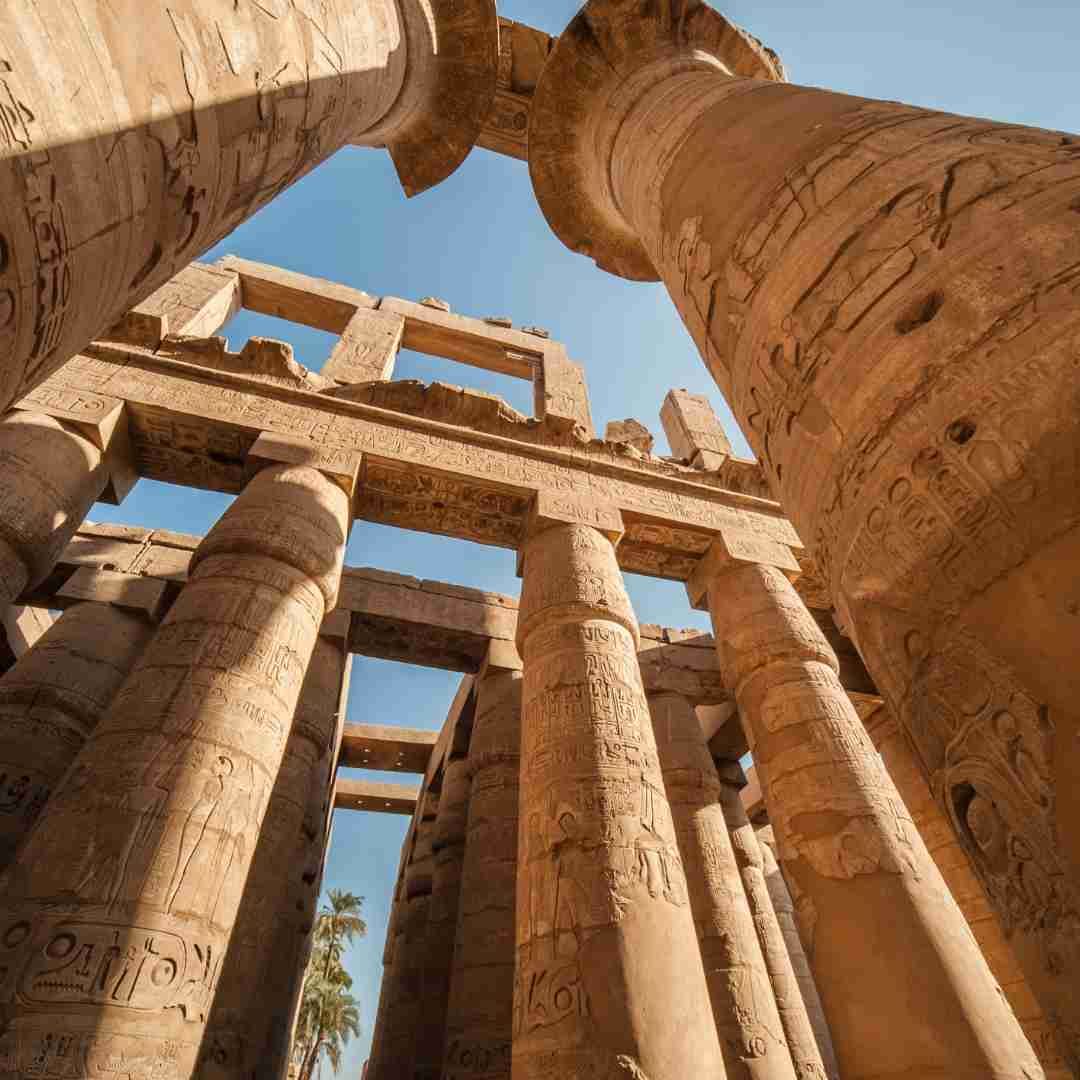Luxor, Egypt, is one of the world’s most fascinating travel destinations, offering an immersive journey into ancient history. From towering temples to the majestic Valley of the Kings, Luxor is a must-visit for history enthusiasts and adventure seekers alike. However, choosing the right time to visit can significantly impact your experience. The weather, tourist crowds, and local events all play a role in determining the best month for your Luxor. This guide explores the different seasons in Luxor and how they affect your visit, helping you decide the optimal time for an unforgettable experience.
Understanding Luxor’s Climate: How Each Season Affects Your Luxor Day Tour
Luxor has a desert climate, characterized by extremely hot summers, mild winters, and very little rainfall throughout the year. The climate significantly influences the overall experience of a Luxor day tour, as most attractions require extensive outdoor exploration.
- Winter (December to February): The most popular season for a Luxor day tour. Temperatures range from 10°C (50°F) in the early mornings to around 25°C (77°F) during the afternoon, making it ideal for sightseeing. However, this is also the peak tourist season, meaning more crowds at major attractions.
- Spring (March to May): The weather remains pleasant, with temperatures rising gradually. By late April and May, daytime temperatures can reach 35°C (95°F), but the mornings and evenings remain comfortable. This is an excellent time to visit for those who want to avoid the winter crowds while still enjoying moderate temperatures.
- Summer (June to August): Luxor experiences extreme heat, often exceeding 40°C (104°F). A Luxor day tour during this time requires extra preparation, such as early morning visits, staying hydrated, and avoiding midday excursions. However, summer also offers lower prices and fewer tourists.
- Autumn (September to November): Temperatures begin to cool down, making outdoor exploration more enjoyable. By late October and November, the weather is comfortable, and the crowds start to increase again as the high season approaches.
Understanding Luxor’s climate will help you plan your trip wisely, ensuring a more comfortable and enjoyable visit.

Best Months for Sightseeing: Why Cooler Weather Enhances Your Experience
For those planning a Luxor day tour, cooler months provide the best conditions for exploring the city’s ancient landmarks. The best months for sightseeing in Luxor are between October and April, when temperatures are milder, and walking around open-air temples and tombs is more comfortable.
During this period, you can explore Karnak Temple, Luxor Temple, and the Valley of the Kings without the intense heat. Visiting in cooler weather also allows for early morning or late afternoon excursions, providing better lighting for photography and a more relaxed atmosphere.
Another advantage of visiting during these months is the availability of additional activities, such as hot air balloon rides over Luxor’s temples and Nile cruises. These experiences are far more enjoyable when temperatures are moderate, enhancing the overall quality of your Luxor day tour.
If you are sensitive to high temperatures and want to enjoy Luxor’s history without discomfort, November to February is the perfect time to visit. However, if you prefer a balance between fewer crowds and pleasant weather, March and October are excellent choices as well.
Special Events and Festivals: Planning Your Luxor Day Tour Around Cultural Celebrations
Luxor is not just about ancient history; the city also hosts several cultural and religious festivals throughout the year. Attending a festival can add a unique dimension to your Luxor day tour, offering a deeper insight into Egyptian traditions and modern life.
- Abu Simbel Sun Festival (February 22 & October 22): Although not in Luxor, many travelers combine their Luxor day tour with a trip to Abu Simbel. This festival celebrates the alignment of the sun with Ramses II’s temple, illuminating the inner sanctuary in a spectacular display.
- Ramadan (Varies Each Year): Visiting Luxor during Ramadan provides a glimpse into Egypt’s spiritual traditions. Although some businesses may have adjusted hours, the evenings come alive with festive celebrations, special meals, and cultural events.
- Moulid of Abu El Haggag (April or May): This vibrant local festival honors a revered Islamic saint and includes parades, music, and traditional performances in Luxor’s streets.
- Christmas & New Year Celebrations (December & January): Many hotels and cruises offer special events during the holiday season, making it a festive and lively time to visit.
If you’re interested in combining history with cultural experiences, planning your visit around one of these events can make your Luxor day tour even more memorable.
Budget and Crowds: How Different Months Affect Prices and Tourist Traffic
The time of year you visit Luxor can also impact your budget and overall experience. High tourist seasons typically see increased prices for accommodation, tours, and flights, while low seasons offer more affordable options.
- Peak Season (December to February): This is when Luxor experiences the highest number of visitors. Prices for hotels and tours are at their peak, and major attractions can be crowded.
- Shoulder Seasons (March to April & October to November): These months provide a great balance of moderate weather, fewer crowds, and more reasonable prices.
- Low Season (June to August): If budget is a primary concern, visiting Luxor during the summer offers significant savings on hotels and tours. However, the intense heat requires careful planning to make the most of your trip.
For those who prefer a quieter experience without sacrificing weather comfort, late autumn or early spring is ideal. On the other hand, travelers looking for budget-friendly options should consider visiting during the summer, provided they are prepared for the heat.
Expert Tips for Booking Your Luxor Day Tour at the Right Time
To ensure a smooth and enjoyable Luxor day tour, consider the following expert tips:
- Book in Advance: If traveling during the peak season, secure your accommodations, flights, and tours early to get the best deals.
- Opt for Early Morning or Late Afternoon Tours: Avoid the midday sun by scheduling your sightseeing tours during the cooler parts of the day.
- Consider a Private Tour: A private tour allows for greater flexibility, comfort, and personalized attention from your guide.
- Check for Special Discounts: Some tour operators offer discounted rates for group bookings or off-season travel.
- Pack Accordingly: Bring lightweight clothing, sunscreen, a hat, and plenty of water to stay comfortable during your trip.
By following these tips, you can make the most of your visit and ensure a well-planned Luxor day tour that meets your expectations.
Conclusion
Choosing the best month to visit Luxor depends on your travel preferences, whether you prioritize weather, crowd levels, cultural events, or budget considerations. While October to April offers the most comfortable climate for sightseeing, the shoulder seasons provide a great balance between affordability and pleasant weather. No matter when you decide to visit, Luxor remains a city of unparalleled historical and cultural significance.
Ready to explore Luxor’s wonders? Book your Luxor day tour with Luxor Egypt Tours agency and experience Egypt’s timeless treasures with expert guidance and seamless planning. Your journey through ancient history awaits!


